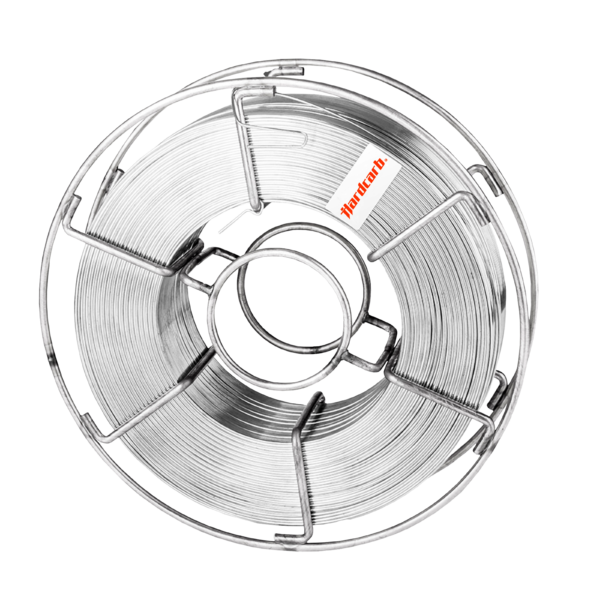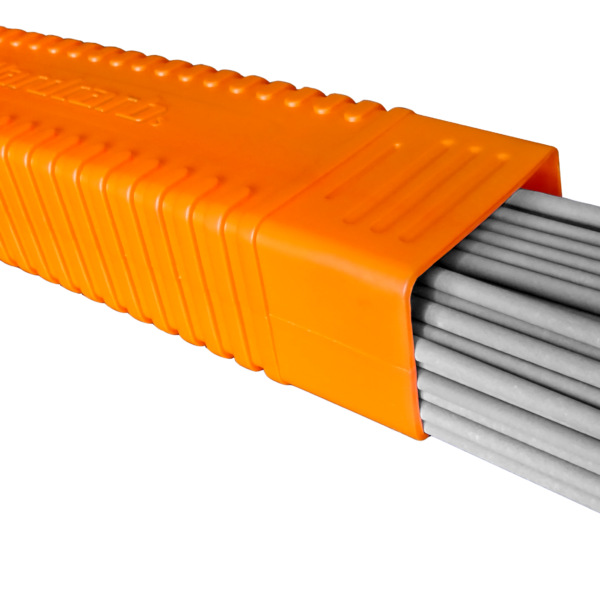Hardcarb 300


A high carbon – chromium austenitic plus carbide alloy steel suitable for applications subject to abrasion, impact and corrosion. It has excellent metal-to-metal frictional wear resistance and the deposit retains hardness at temperatures up to 650 C. It is a low-cost Stellite 6* substitute for parts subject to shock and wear and wear.
Weld deposit characteristics:
The weld deposit is a high Cr-, Ni-, Mo-, and C-alloyed austenitic plus carbide alloy steel that is abrasion, corrosion, heat and impact resistant. Deposit shows a shiny surface like that of stainless steels and has good edge-retention capacity.
The material cannot be flame cut, offers good resistance to scaling and cannot be machined. It can be ground or finished with great difficulty using special carbide or diamond tools.
Recommended uses and applications
» gyratory crusher cones and mantles
» dredge pump bodies
» slurry mixer paddles
» vegetable oil extrusion presses
» agitator parts in the pulp and paper industry
» extruder screws
» ingot tongs
» mill guides
Additional info
Anti-wear suitability
| Metal-to-Metal friction Metal surfaces in relative motion forced into contact with or without lubricant. Degradation by the formation of micro-welds between the contacting surfaces. | Suitable |
| High pressure abrasion Wear by relative movement under pressure of mineral particles of suitable hardness, shape and texture to remove material from the metal surface, leaving superficial deformation. | - |
| Cavitation Tearing out of grains from the metal surface by the formation and implosion of bubbles in a liquid in rapid motion. | - |
| Mechanical fatigue Fatigue and formation of cracks in surface regions due to tribological stress cycles that result in the separation of material. | - |
| Thermal fatigue Cyclic exposure to high temperatures leading to permanent deformation by alternate expansion and contraction. Alteration of the structure and properties of the material. | - |
| Hot oxidation Creation of a poorly adhering oxide layer that reforms constantly. Degradation by loss of material thickness. | - |
Workability
| Work hardening Work hardening is the process of making a metal harder and stronger through plastic deformation. When a metal is plastically deformed, dislocations move and additional dislocations are generated. | |
| Edge retention Suitability for creating sharp edges and retaining them during operation. | |
| Machining Machinability is the ease with which a metal can be cut (machined) permitting the removal of the material with a satisfactory finish at low cost. | Not possible. Only grinding possible. |